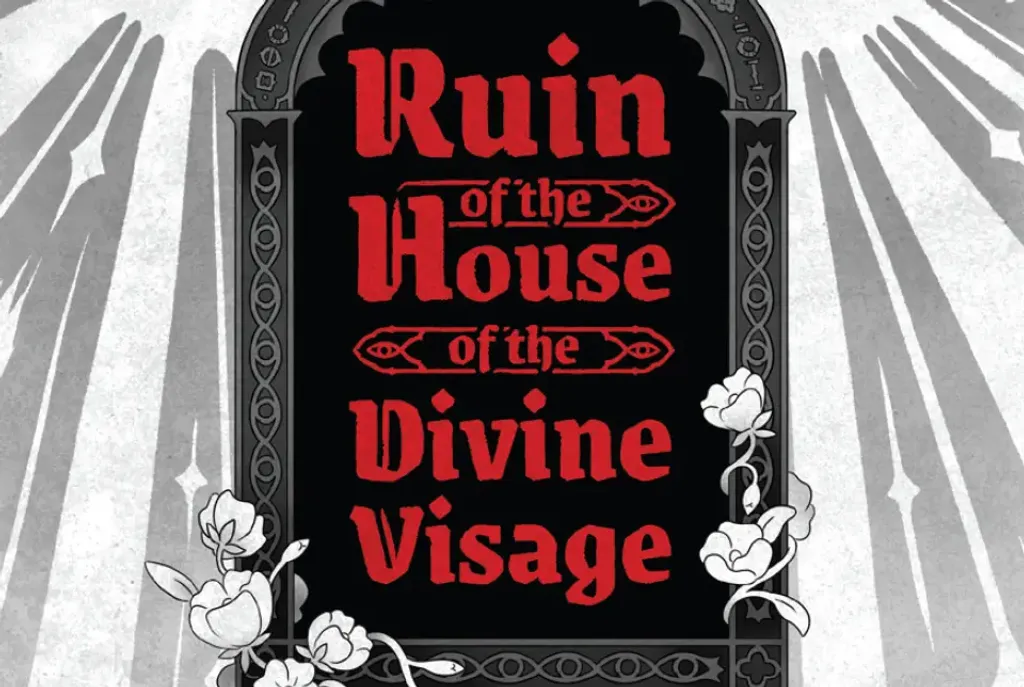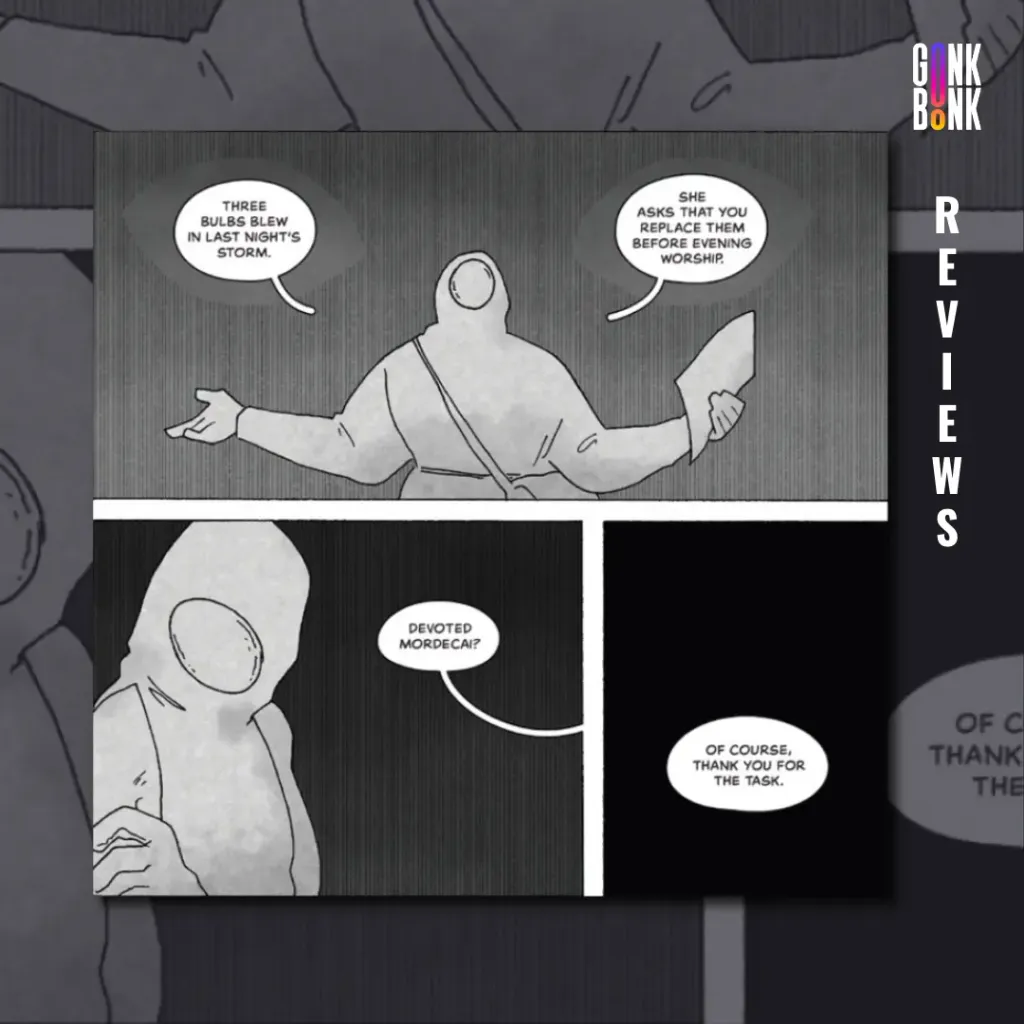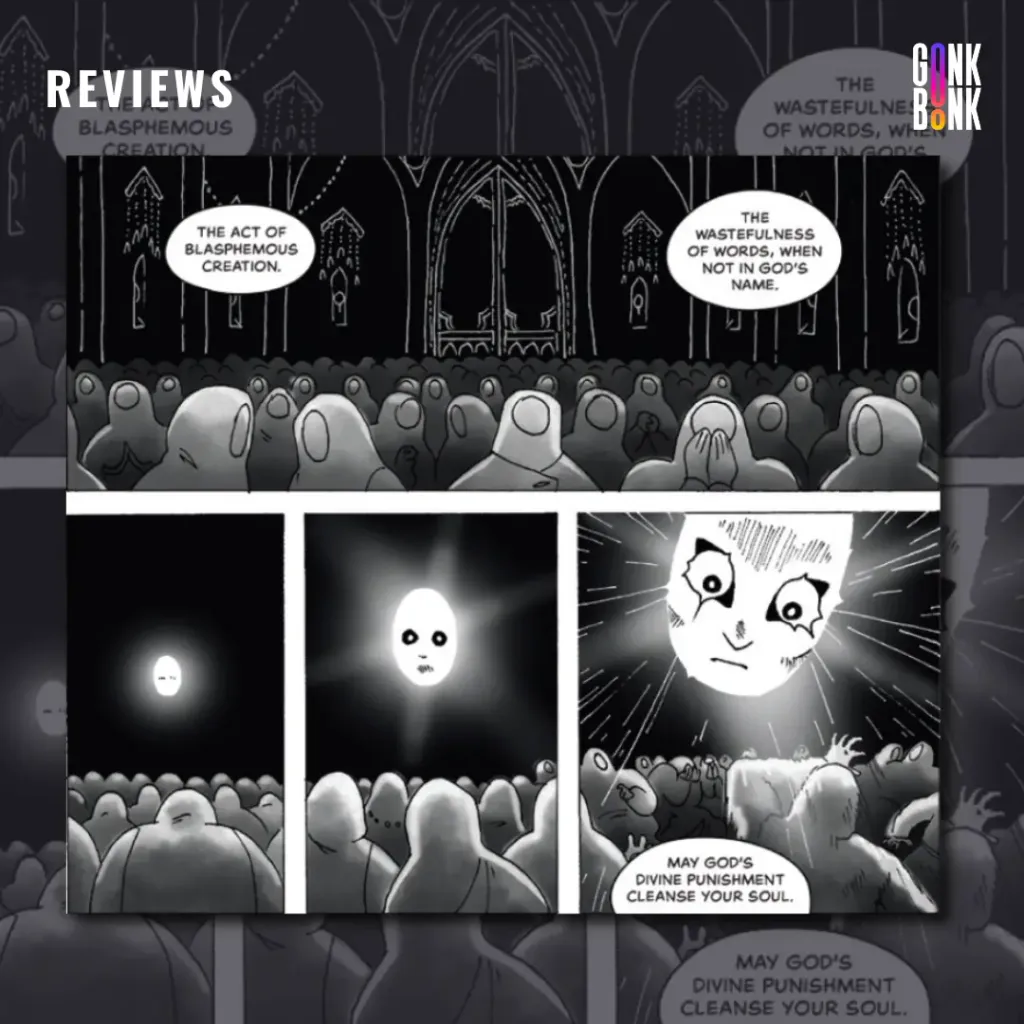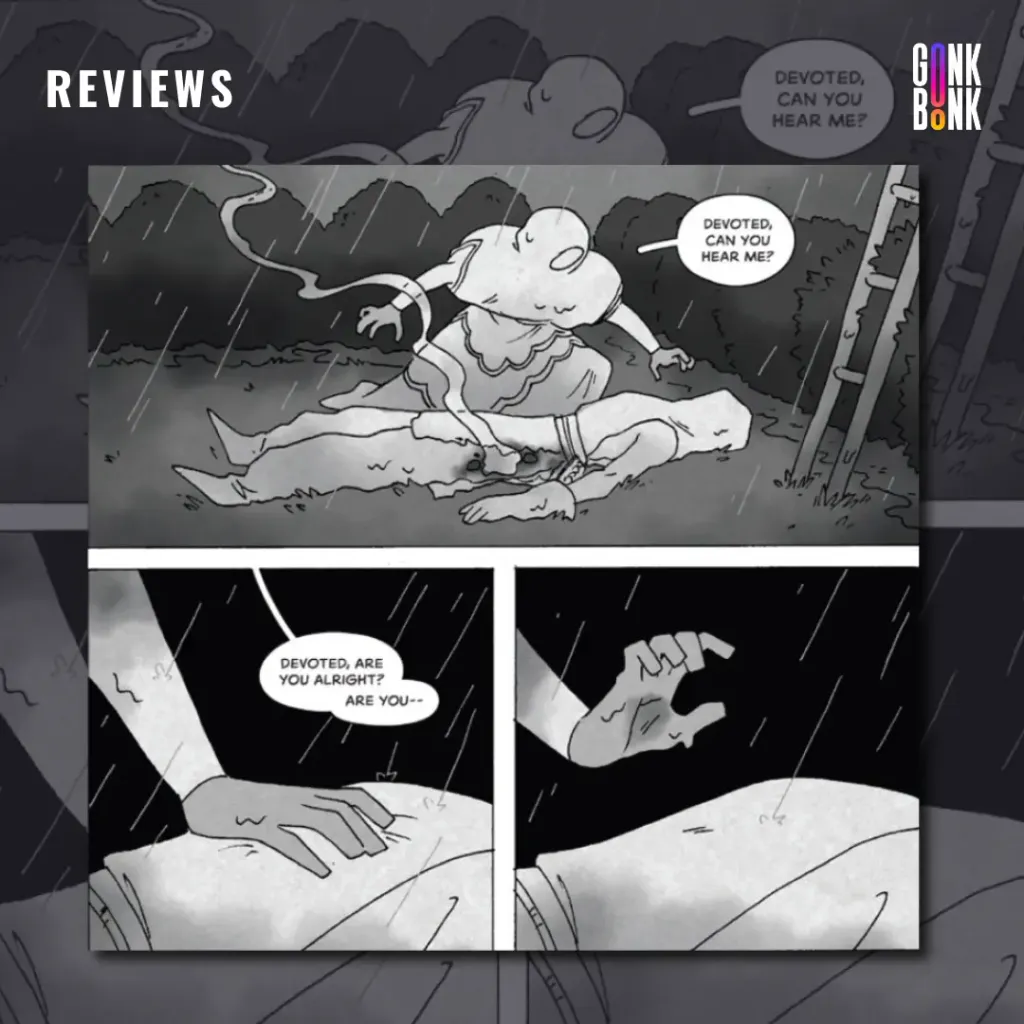Ruin of the House of the Divine Visage Review: A Beautiful Revelation
Immerse yourself in the Ruin of the House of the Divine Visage, the emotionally striking graphic novel by Eve and Spire Greenwood.

Ruin of the House of the Divine Visage
Review
Writer: Eve Greenwood
Artist: Spire Greenwood
Publisher: Thunderstorm Studios
Release Date: October 2, 2024
Page Count: 133
Format: Graphic-novel
Ruin of the House of the Divine Visage is a haunting exploration of queerness and religious oppression, told through strikingly minimalist art that speaks volumes in its simplicity.

Ruin of the House of the Divine Visage
ReviewWriter: Eve Greenwood
Artist: Spire Greenwood
Publisher: Thunderstorm Studios
Release Date: October 2, 2024
Page Count: 133
Format: Graphic-novel
Ruin of the House of the Divine Visage is a haunting exploration of queerness and religious oppression, told through strikingly minimalist art that speaks volumes in its simplicity.
I firmly believe that great graphic novels can be found anywhere in all forms and sizes. Ruin of the House of the Divine Visage is a book that reminds me how true that sentiment is. Created by Eve and Spire Greenwood, the pair is currently running a successful Kickstarter campaign to get the graphic novel off the ground. With its minimalist art and emotionally resonant story about love and defiance, the comic had me in an emotional chokehold from start to finish. While it may not be a comic you’ll commonly find on the shelves, its beautiful story deserves to be read by more people who appreciate the magic that can be created from the medium.
Curious to know about this ominous yet charming graphic novel? Keep reading for my full review of Ruin of the House of the Divine Visage!
Overview of Ruin of the House of the Divine Visage
The story follows Mordecai, a member of an enigmatic religious community. In this oppressive society, daily life revolves around menial tasks assigned by an ever-present god figure. But when an accident leads to a chance encounter with Seneca, Mordecai's world gets flipped upside down. As the two develop a bond that defies the rigid norms of their community, they find themselves at odds with the watchful and threatening eyes of those who maintain order.
 Image: Thunderstorm Studios
Image: Thunderstorm StudiosReview
The first thing that grabbed my attention about Ruin of the House of the Divine Visage is its striking visual style. The Greenwoods employ a stark black and white palette that immediately sets a somber, almost oppressive tone. It's a bold artistic choice that pays off in spades, as it perfectly mirrors the restrictive society at the heart of the story. But don't let the minimalism fool you – every page of the graphic novel is deep with emotions that will stick with you as you get deeper into the story. One of the most fascinating aspects of the art is how it expresses so much emotion from characters who spend most of the story behind featureless masks. It's a testament to Greenwood’s artistic skill that we can feel Mordecai's uncertainty, Seneca's compassion, and the crushing weight of their society's judgment through body language and subtle visual cues alone. It makes the rare moments when the story shows their real faces hit harder through the character’s palpable vulnerability.
The use of color (or lack thereof) also plays a crucial role in the storytelling. While most of the book sticks to its stark monochromatic palette, there are pivotal moments when color splashes onto the page. Without spoiling too much, those moments of chromatic revelation perfectly encapsulate the emotional journey of the story. The graphic novel is just packed with plenty of clever, deliberate artistic choices that make Ruin of the House of the Divine Visage such a great read.
 Image: Thunderstorm Studios
Image: Thunderstorm StudiosWhile the visuals are breathtaking on their own, the graphic novel’s resonant story will keep you turning pages. The Greenwoods craft a narrative that's intimate in scale but vast in its thematic exploration. By focusing on just a handful of characters within a single, claustrophobic setting, the comic dives deep into the internal and external struggles faced by the lead characters, Mordecai and Seneca. It tackles weighty themes head-on, using its religious backdrop as a lens to examine queerness, conformity, and the fear of being the "other." The evolution of Mordecai and Seneca's relationship feels organic, with moments of tenderness and tension that ring true.
But I'll admit that the narrative does take a little time to find its footing. The early parts can feel opaque as the graphic novel thrusts you straight into an unfamiliar world with very little to go by. But once the layers of the House of Divine Visage begin to peel back and reveal its true face, you'll find yourself utterly engrossed. By the graphic novel’s incredible climax, which more than lives up to its ominous title, you'll be wholly invested in these characters and their fate.
 Image: Thunderstorm Studios
Image: Thunderstorm StudiosFinal Thoughts
Ruin of the House of the Divine Visage is the kind of graphic novel that lingers with you long after you've closed the final page. Its stark imagery and emotionally charged story worm into your brain, demanding reflection. While it might not be for everyone, those willing to immerse themselves in this unique world will find a rewarding experience that tackles complex themes through innovative storytelling and art. If you're a fan of comics that challenge your perceptions and aren't afraid to get a little weird, Ruin of the House of the Divine Visage should be at the top of your to-read pile. It's a prime example of how sometimes, the best graphic novels come from unexpected places.
Be sure to support the Kickstarter campaign as well while you still can!
Why You Should Read Ruin of the House of the Divine Visage
- Strikingly minimalist art that conveys deep emotion
- A nuanced exploration of queer themes within a religious context
- An intimate story that tackles big ideas